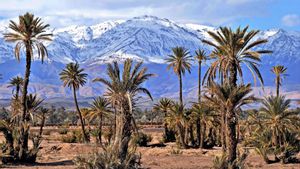JAKARTA - The United States space agency NASA launched the James Webb telescope into space to study the formation of Earth in the galaxy. Christmas Day. The James Webb telescope will be in space for two weeks, it will reach its point in the sun's orbit 1 million miles from the earth, about four times farther than the moon. The orbital path of the Webb telescope will align with the earth so that the telescope and the earth will together around the sun.
Its predecessor, Hubble, orbits Earth from a distance of 340 miles, passing through Earth's shadow every 90 minutes. The Webb telescope is about 100 times more sensitive than the Hubble. The telescope is named after James Webb, after one of those who supervised NASA in the 1960s. The James Webb telescope can show glimpses of previously unseen parts of the Earth, some 100 million years after the explosion. Big Bang. The explosion is thought to have occurred 13.8 billion years ago. The Hubble telescope's vision could be as far as 400 million years after the Big Bang, the first period shortly after the formation of galaxies, when new clusters of stars and gas formed. The Webb telescope can see the object in greater detail, including faint signs of galaxies in the early period. This device is also equipped with instruments to examine the potential for atmospheres that can support life around exoplanets that have just been documented.
The English, Chinese, Japanese, Arabic, and French versions are automatically generated by the AI. So there may still be inaccuracies in translating, please always see Indonesian as our main language. (system supported by DigitalSiber.id)













